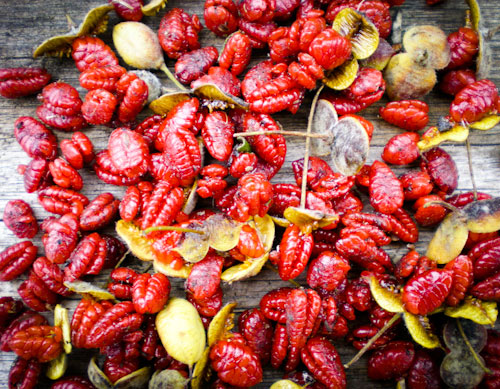





The Banyalla Conundrum Go on admit it, the Otways is home to some beautiful and majestic trees. Towering mountain ash, ancient myrtle beech and gullies full of blackwood come quickly to mind. These are the useful trees, the commercial trees, the ones we like to photograph and write stories about. Sometimes though, we forget to bring our vision down into the understory where there is an amazing array of interesting and unusual shrubs and small trees stretching upward to the canopy above. Gondwanan in origin, the genus Pittosporum includes 200 species across Africa, Oceania and Australasia. Out of the 11 species native to Australia, the two that are the main characters in this Otway story are the sweet pittosporum (P. undulatum) and, not surprisingly, our very own banyalla. The story, as yet unfinished, looks like it may not have a happy ending. Sweet pittosporum’s original territory is east of Melbourne skirting the coast all the way up to Queensland, but for over a century has been widely planted as a sweetly scented shade and hedge tree in Otway coastal towns. Banyalla’s home territory is mostly at higher elevation along the Great Divide with its westernmost population here in the Otways. Historically it has been overlooked as a garden ornamental. Along the Great Ocean Road, the fruit of sweet pittosporum has become a tasty addition to many a bird’s diet where the seed is digested and ejected far and wide and inland into banyalla territory where they readily germinate into dense trees shading out any competition, including from the banyalla. But something even more sinister is lurking behind the scenes. The two species are VERY closely related and now that the invader has moved into banyalla territory they have started to hybridise. This hybrid subspecies is now categorized as P. undulatum ssp. x emmettii and is popping up in the least expected places. Increasingly, the collection of banyalla seed is becoming more fraught with serious gene pollution issues. Collecting from populations where the hybrid is absent will mostly assure the collector of pure genes but the Otways are small and not very high in elevation. There are unknown numbers of hybrids germinating every year, potentially spreading further into the deepest, most isolated parts of the Otways. Botanists from Monash Uni have begun some initial research into the hybrid but it’s still very early days and no real answers are forthcoming short of removing all the hybrids and P undulatum across the Otways. A seriously monumental task! So what can be done? Education is a start, thus this article. Please pass it on to your friends. If you the reader know of these weeds growing in your garden or in the bush near you, why not get into action. Get the saw sharpened, inform your neighbours or get your Landcare/friends group on side. As a grower of banyalla I really need to know where I can go to safely collect seed to keep the true lineage of the species going. This task is becoming harder by the day. The Otway Range is an island surrounded by ocean and grassland. The banyalla has literally got nowhere to go and not enough time to evolve to find its way out of the conundrum it finds itself in.
Back to Dr. Tree | Previous article | Next article
|

 Banyalla (Pittosporum bicolor)
Banyalla (Pittosporum bicolor)